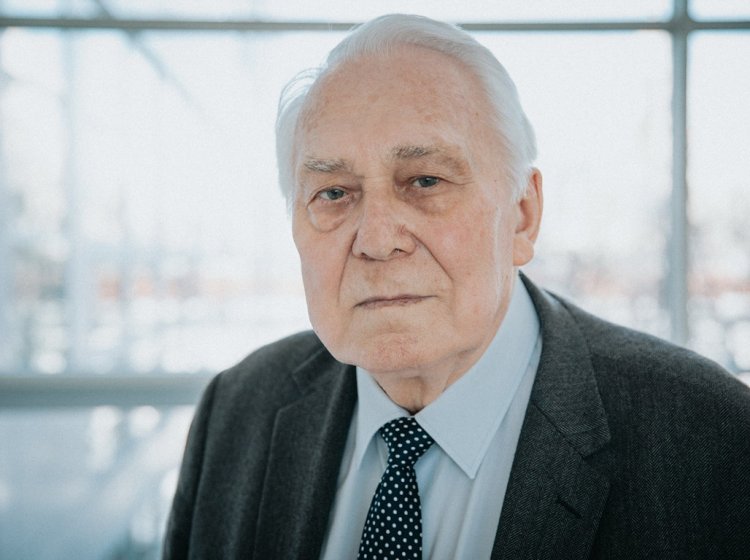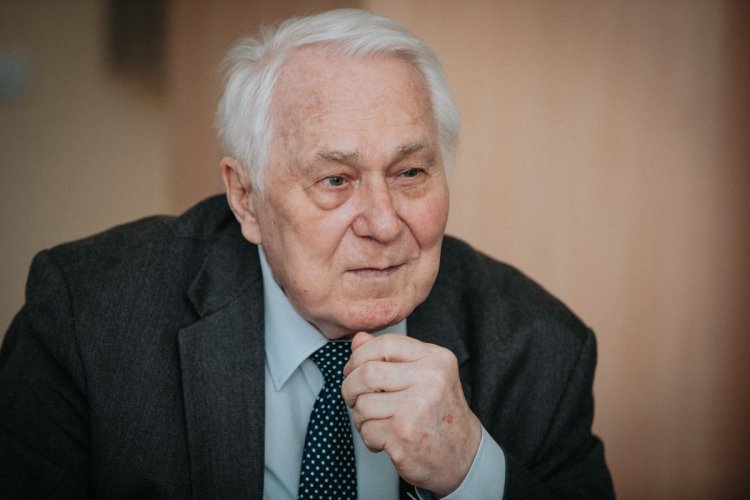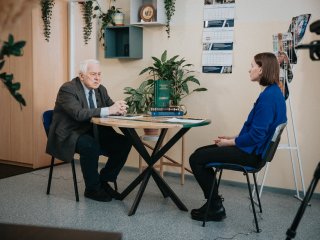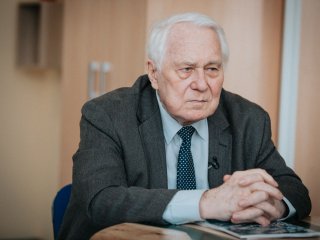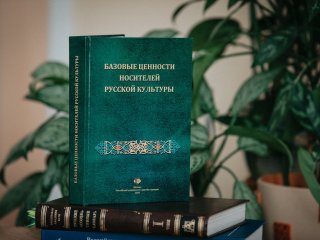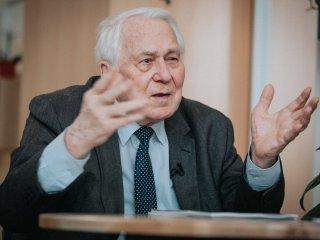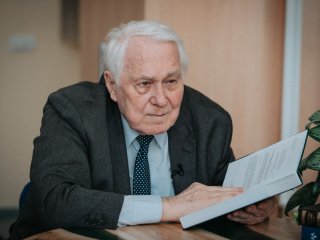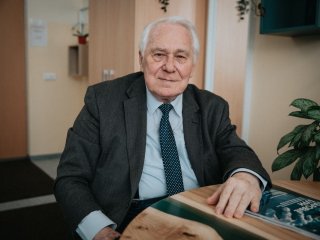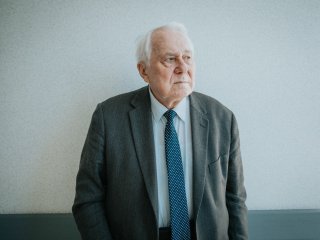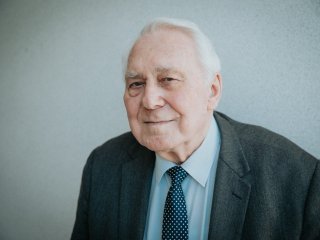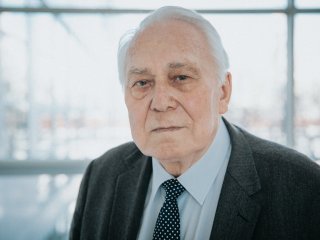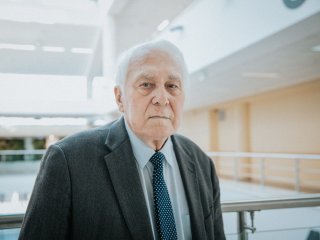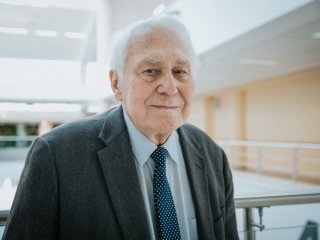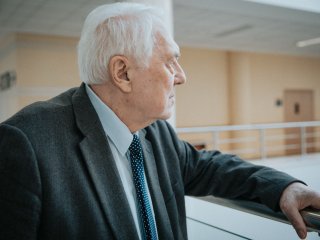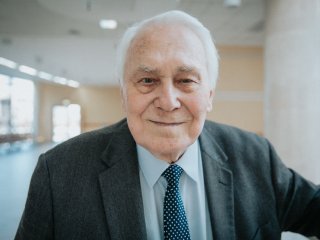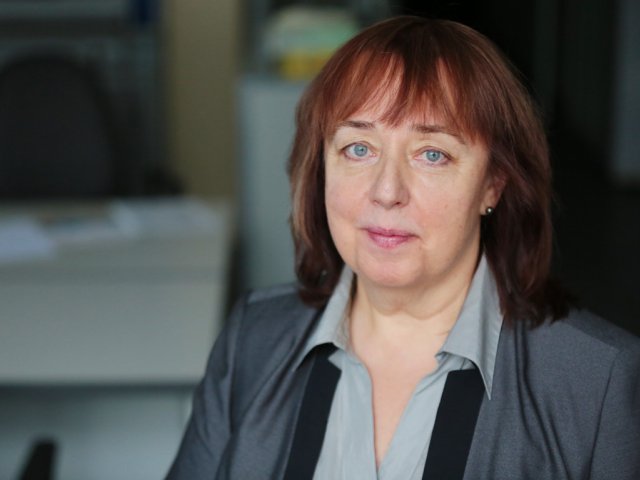“I think, therefore I am,” said philosopher René Descartes. However, we exist in a society. Every day, each of us receives diverse information, polar opinions, signals from sensory organs. Of course, all this affects humans, their way of thinking, speech, and language peculiarities. Read an interview with Doctor of Philology, psycholinguist Evgeny Fedorovich Tarasov about the connection between culture, thinking, language, and speech.
Evgeny Fedorovich Tarasov – Doctor of Philology, Professor of the Chair of Linguistics and Intercultural Communication at the Russian New University.
– Evgeny Fedorovich, what does the term “psycholinguistics” describe today?
– Psycholinguistics is a scientific discipline that emerged at the intersection of psychology and linguistics. Linguistics was unable to give an unambiguous answer to many questions. Therefore, it was necessary to combine the efforts of linguistics and psychology. For a linguist, linguistic science is a descriptive science. It can only describe what linguists hear. However, our speech comprises not only the sound component. It includes stages of psychological speech preparation that linguistics does not take into account. Therefore, there was a need to unite the two disciplines.
In 1953, the United States of America established a summer school for both linguists and psychologists. This is how Charles Osgood’s first school of psycholinguistics emerged.
However, it did not exist for a long time, as the school adherents were guided by the theory of behaviorism as a psychological fragment. Psychologists did not welcome it. Therefore, the first school of psycholinguistics existed until 1957.
– What can you say about the further development of psycholinguistics?
– Noam Chomsky’s review of Burrhus Skinner’s book Verbal Behavior was published in 1957. This phenomenon symbolized the end of the Osgood school and the emergence of the Miller-Chomsky school. This school existed for a longer period of time – until the 1980s.
I should note that psycholinguistics studies four problems: speech production – how people speak; speech perception – how people understand other people’s speech; verbal communication, i.e. interaction through speech when people cooperate with each other; and language ontogeny, i.e. children’s speech.
Neither Osgood’s psycholinguistics nor Miller-Chomsky’s psycholinguistics provided a satisfactory solution to these four problems. For example, Chomsky suggested a generative theory of language description where one more element is added to the smallest syntactic structure originally existing in a language to produce the next structure. The generative way of creating syntactic structures had been known for a long time, but it was Chomsky to apply it to linguistics.
However, there were psychologists who suggested that people also build their speech based on generative grammar. For example, if I want to say: “I am writing a letter,” then, according to this hypothesis, first I form the structure “I am writing” and then – “I am writing a letter.” Or I introduce an additional structure, such as “I am writing a letter home.”
They were checking this hypothesis for 20 years. They conducted about three hundred thousand experiments, but there were always opponents of generative psycholinguistics to make a counter-experiment and overturn their opponents’ results. The researchers concluded that the generative theory of speech production and perception had not been confirmed. Therefore, the Miller-Chomsky’s psycholinguistics “died” approximately in the 1980s. After that, all psycholinguists started checking their own theories without looking back at Chomsky’s work.
However, we should necessarily mention the third psycholinguistic school called the Theory of Speech Activity. This is a domestic area of psycholinguistics that arose back in 1966 and was the only school to give satisfactory answers to all the four problems of psycholinguistics, and we are very proud of this fact. And this great merit belongs not even to linguists, but to domestic psychologists who were guided by the theory of activity developed by Aleksey Nikolaevich Leontiev. It implies that any human activity is considered based on the interaction of a subject with an object. Thus, any activity comprises a subject, an action and an object. This system is very good to analyze speech and verbal communication.
For example, I am speaking now, i.e. I am making verbal statements with a specific purpose. I would like my listeners or readers to share my thoughts. I am influencing the audience.
Thus, the psycholinguistic theory of speech activity suggested working models of speech perception and production that were adequate enough to be used in experiments.
One of the domestic linguists who may be called the forerunners of psycholinguistics is Aleksandr Afanasyevich Potebnya, a student of Alexander von Humboldt Potebnya significantly contributed to the understanding of the verbal thinking and speaking processes. Jan Niecisław Ignacy Baudouin de Courtenay, a Soviet-Polish researcher, also made a great contribution to the development of domestic psycholinguistics. However, the true forerunner of Russian psycholinguistics is Lev Vladimirovich Shcherba.
Today, domestic psycholinguists are focused on the theory of activity by Aleksey Nikolaevich Leontiev in the psychological aspect and on the activity approach by Lev Vladimirovich Shcherba in the linguistic aspect. These scientists formed a specific fund of knowledge used within the theory of verbal activity developed by the domestic psycholinguistic school headed by Aleksey Alekseevich Leontiev, the son of Aleksey Nikolaevich Leontiev. Leontiev junior held a degree in linguistics and also had good psychological training. Aleksey Alekseevich reviewed foreign publications, did colossal work almost alone, published several books where he demonstrated the positive and negative aspects of the existing theories and substantiated his own theory of speech activity.
– Is the Russian theory popular in western countries?
– This theory is not very popular due to its contradiction with all the postulates of the transformational psycholinguistics suggested by Miller-Chomsky and Osgood. Although the theory of activity by A. N. Leontiev and the cultural-historical approach by L. S. Vygotsky are considered the future of psychology, foreign cognitive scientists are not ready to master the theory of activity at the moment.
However, some scientists are taking interest in these areas and translating publications by our psycholinguists. However, the number of such people is not large. The most famous domestic psycholinguist is Aleksandr Romanovich Luria. Why so? He promoted the translation of American psychologists’ publications into Russian. And they, in turn, translated Luria’s publications. He is largely known among foreign scientists for the existence of such an exchange.
– You note that the first school emerged in the 1950s. However, there is another opinion saying that the echoes of psycholinguistics may be found even in the 18th century.
– I agree with this point of view. The work by Humboldt who proposed to regard language as an activity may be considered the rudiments of psycholinguistics. Humboldt applied the activity approach, as the theory of activity had already been formulated at that time and it was actively developed by his outstanding contemporaries, including Friedrich Wilhelm Joseph Schelling and Johann Gottlieb Fichte. Therefore, of course, psycholinguistics evolved from the previous work.
– There are many different opinions about the connection between thinking and speech. What theories are accepted by the scientific community today?
– People have to form a thought to say something. Speech is a thought having a form understandable to others. It means that my thought is available to me only in introspection, in “peeping” inside. Although in this form my thought has much in common with other people’s thoughts. After all, all of us are the bearers of the same culture. Our consciousness is filled with images of the objects of our culture. For example, we do not know the design of a Mongolian yurt, but we have an idea of what a house in a Russian village may look like. This is a cultural object. Thus, the consciousness of any person is filled with images of the objects of their culture. It is a prerequisite to communication and understanding between people. We can communicate resting upon the same psychic images.
There is also another way. People can express an idea about what they observe. In this case, their speech will be directly connected with observation and cognition processes. Thus, when I look at a table, it exists in my mind as an image. It means that this is an image of this table rather than a real table. Therefore, my consciousness is individual, but at the same time it is culturally conditioned, which explains why the bearers of the same culture have common consciousness.
When people see a real-life object, they form it as a result of perception consisting of the processes of influencing this object with a glance, hands, on the one hand, and the influence of this object on the organs of vision, touch, smell, i.e. human receptors, on the other hand. This is how they form a sensory image that later turns into a perceptual image. When I see an object, I try to compare it with what I have already seen. Thus, if I have no perceptual references, i.e. I have nothing to compare this object with, then I may fail to recognize it.
In simple words, reality exists for me in the images of my consciousness. Therefore, if I want to share my perception with you, I have to “dress” my own individual knowledge into knowledge being common to you and me, describe everything in a comprehensible way for you. And this is knowledge associated with language. It means that language is not consciousness but a way in which consciousness exists in an external form.
– Kind of a tool?
– Absolutely. Experts call it linguistic consciousness. This is a metaphor, of course. It is about the consciousness that unites all people speaking this language. F.I. Tyutchev once said: “A thought once uttered is untrue.” What did he mean? People generate some thought using their individual images and would like to share it with others, but feel that they have a shortage of words to convey their thought. Therefore, there is always a gap between thoughts and the way they are expressed.
Besides, when I speak, I do not convey any thoughts, information. I only produce bodies of linguistic signs, i.e. sounds. Consequently, when we hear someone else’s speech, we perceive it using our knowledge of the language and translate it into the images of our consciousness.
Now I am pronouncing only sounds, however, they are arranged into a specific grammatical chain. And you – by using your knowledge associated with individual words – are building the content of my statement being focused on the grammatical design of the speech chain. Please imagine that several people, including a ten-year-old child, are listening to me now. Will everyone understand me the same way?
– Hardly.
– That’s right, a child will definitely understand me improperly. Why so? They will be guided only by their own knowledge.
When speaking, I give my listener a program to form the content of my speech. The listener gets access to the specific thought that I wanted to express.
– However, you may actually have absolutely different thoughts, right?
– Of course. The content of my speech is formed only by the listener. This is how they describe the speech production and perception processes that are directly connected with each other and take place simultaneously in an oral form. The key to understanding is common consciousness. If it does not exist, it will be difficult for interlocutors to understand each other.
– How do people belonging to different cultures manage to interact with each other?
– Different peoples have to perform joint activities. They interact with each other through speech and actions, objects, and tools. Thus, language is not the only sign and means of mutual understanding.
– Does it mean that we cannot equate thinking and language? Language is a tool in this case, isn’t it?
– Language is a way to introduce the results of thinking.
– How do our speech and thinking change under the influence of digital technologies? Are there any studies in this area?
– Yes, there are a lot of related studies. The range of problems is wide, so I will focus on just a few of them. First of all, if you are an active Internet user, you might have noticed that a huge number of people have stopped writing correctly. They have lost social control.
Evgeny Fedorovich Tarasov – Doctor of Philology, Professor of the Chair of Linguistics and Intercultural Communication at the Russian New University
Besides, such an element as hypertext has appeared in the cyberspace. It takes into account all previously published texts and allows creating electronic communications, links, connecting one text with another, which is necessary for understanding the final text.
And today we are experimenting with hypertexts in a paper format. In the analog system, there are the current text that I read, the “pretext” that I was given for a preliminary review, and the “posttext” meant for the better understanding of the current text.
Meanwhile, in order to understand the text, you need to do something after reading it, as the understanding process is merely a process. Now, when you are listening to me, every time you catch a few words or an entire sentence. Therefore, in order to find out what you remember, it is necessary to encourage you to create an abstract, an essay, a retelling, i.e. some action. You have to reproduce the mastered content using new signs – drawings, texts.
Through Internet links, I can encourage someone to understand some text in the way I need. Proposed links make readers refer to specific texts focused on the desired information interpretation.
– You have mentioned such a problem of psycholinguistics as the study of language ontogeny. When and how does a child acquire an ability to communicate?
– To develop a personality, a child has to adopt the culture in which they were born. At what age should children start mastering it? From the moment of birth. Of course, children are born with some innate inclinations. For example, there is no need to teach an infant how to suckle mother’s breast. They do that reflexively. However, in order to master their culture, they have to study, i.e. master cultural objects. Children are unable to do this on their own. Therefore, there has to be an intermediary, an educator, between cultural objects and children. Children gradually master specific actions under this person’s guidance. Thus, Vygotsky’s cultural-historical theory is based on this principle of interaction between a child and an adult, and it is noteworthy that the actions performed by the adult are recognized by the child. Consequently, babies’ consciousness is built based on the images of actions that they perform with an adult even before they start speaking. Normally children start to speak at the age from one year to one year and a half. And if they manage to master action-related skills, then they will easily master speech-related skills. Why so? The reason is that children’s words are equivalent to the surrounding objects named by their parents and other adults.
The time of the most active language acquisition takes place at the age of five or six. For example, children speak 30-40 words at the age of one year and a half. At the age of two years, they should know about a thousand words. At preschool age – seven to eight thousand words.
– What questions does modern psycholinguistics seek to answer? What is its focus of development?
– Talking about our domestic school, it is actively developing the speech production model. This is a great merit of Tatyana Vasilyevna Akhutina. She studies brain activity pathologies leading to speech disorders.
The speech perception model by Irina Alekseevna Zimnyaya is also being actively developed. Today we are jointly trying to establish a connection between linguistic and non-linguistic consciousness (images).
Modern linguists have developed quite extensive and deep ideas of what we do with our speech in its external form. However, unfortunately, explanatory models saying why we do it this rather than another way are unavailable to us at the moment. Why so? The reason is that we have to take into account psychological aspects for this purpose. They are available only within the framework of psycholinguistics. Thus, linguists naturally compete with their peer psycholinguists.
One of the most interesting areas is concerned with creating associative dictionaries. They capture the consciousness of modern generation representatives. Associative dictionaries are compiled through so-called associative experiments. Subjects are shown a list of words. After each word, they have to write the first word that comes to their mind. Using this approach, we register the associative links and linguistic consciousness of the living speakers of a given language. Now I will pronounce a word and I’d like you to share your first association with it: “a woman.”
– A man.
– Well done! The most common answer. And it is not fortuitous. Men and women coexist. However, the frequency of “man” among the Russians is 12%, but the British name this word in 80% of the cases. Such associative dictionaries allow taking “casts” of English, Russians and Germans’ consciousness. Kind of a tool to analyze linguistic consciousness.
Another area is concerned with identification of basic values. For example, “poverty,” “soullessness,” “lack of responsibility” – an anti-value, “security” – a value. Our experiments show what the bearers of Russian culture consider a value and what words they use to describe it.
I think that speech production, perception, language ontogeny, verbal communication are eternal problems. It is always necessary to form verbal communication skills among the representatives of each next generation. For what? So that they can simply survive in a society. And this activity is endless, taking into account that generations are constantly replacing each other. If it stops, there will be no culture. Without culture, there will be no society. Without society, there will be no individuals, as human beings cannot survive alone. All of us are living in a society.
